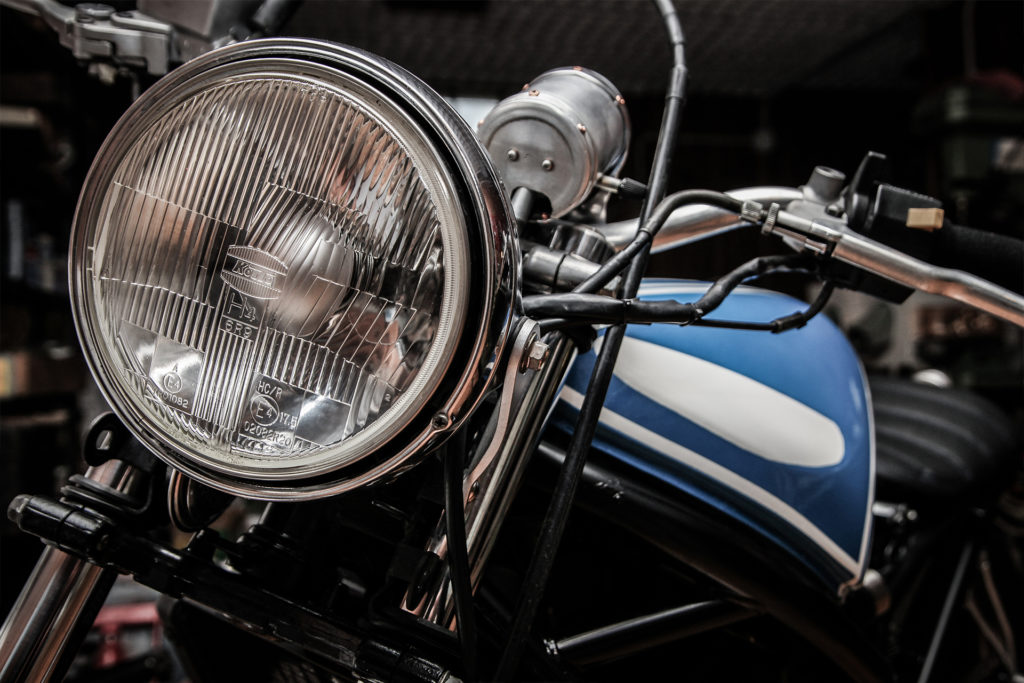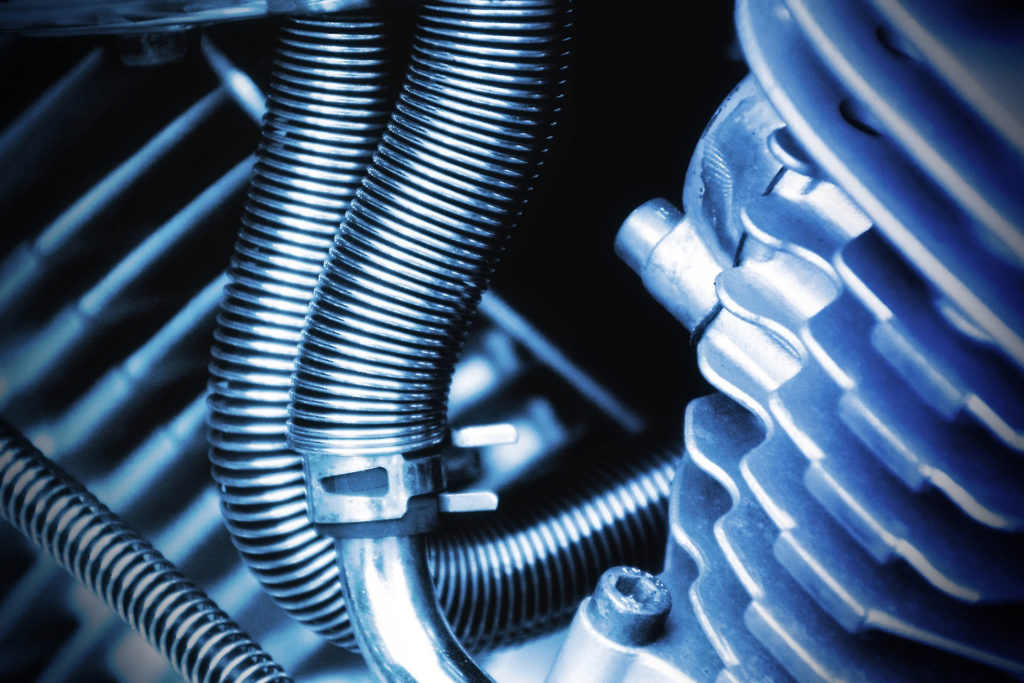We’ve moved the clocks forward. The sun is making a more regular appearance in our forecast. Signs of Spring are (at last!) popping up all around us. To celebrate, we’ve put together a few spring motorcycle maintenance tips to get you and your bike back on the road. If you have beginner to intermediate experience motorcycle maintenance, this post is for you–especially if you followed our winterizing tips. We hope even the seasoned riders out there will end up with a helpful hint or two. Here are our suggestions to get you on your next adventure before you know it:
Tires
If you’ve been driving for awhile, you might remember Michelin’s famous ad campaign which wisely reminds that ‘so much is riding on your tires’. Well, this is especially true when you own a motorcycle. The start of the season is a great time to inspect the condition of your tires. Roll your bike outside where you’ll have plenty of light and put it on your centre stand. Examine and make sure you don’t spot any cracks in the rubber or any balding. Take a close look at your wear indicators, which are little bumps or bars in the groove of your tire. Sometimes there will be little arrows to help you find them. If they’re worn down, it’s definitely time for new tires. Lastly, check your tire pressure, and inflate your tires as needed.
Lights & Gauges
While you’ve got your battery plugged in, have a look at your lights and gauges. Make sure that everything is lighting up and indicating normally. While you’re at it, make sure your brake lights and turn signal are functioning properly. If not, here’s how to replace a bulb.
Battery
Our Winterizing Guide calls for the use of a battery tender or trickle-charger. If you went this route, use it to take a quick read on the health of your battery. With any luck, it’s been consistently warm and dry, and your battery is fully charged. If your bike won’t start, there are a few things you can try first before heading out to buy a new battery. Here’s how to troubleshoot.
Brakes
Unlike with most cars, it’s a pretty easy matter to visually check your brake pads while they’re on your motorcycle. They have wear indicators too. It’s up to you whether you want to replace them yourself, but for safety reasons, we recommend visiting your mechanic.
Fluids
Best-case-scenario is that you drained your gas tank or used a fuel-stabilizer to keep your motorcycle’s insides in good condition over the winter. If not, you may have some serious cleaning ahead of you. If it’s been awhile since you’ve changed your oil, go ahead and follow your manufacturer’s recommendation for changing it, including the appropriate type of oil to use. Air may have accumulated in your brake lines over the winter, and this can be sorted out by bleeding your brakes. If you start tinkering and notice you’ve got a rusty tank, are due for an oil change, plus need a top up on brake fluid, your best bet might be to head to your mechanic and ask for a springtime service package.
Chains & Sprockets
Grime and dirt are your enemies because they interfere with the way your chains and sprockets transfer torque from your engine. For optimal performance, you’ll want to take the time to inspect, tighten, clean, and lube up your chain for optimal performance. Learn how to adjust your motorcycle chain, and protect it from rust by watching this brief video.
Gear
From conditioning your leather to checking the integrity of your helmet, making sure your gear is good-to-go is just as important as confirming your brakes are in working order–more so if you’re ever in an accident. It’s essential to know the expiry date on your helmet. If you aren’t sure where to find the expiry sticker, manufacturers will usually place it underneath your comfort liner. Although the materials in helmets that absorb impact degrade slowly, they still break down. How long it lasts depends on the manufacturer, and how you’ve stored your helmet over time. Some might need to be replaced as often as every three years. For others, it could be closer to every five. We hope it goes without saying that stretching an extra season out of a helmet to save a few bucks is a bad idea. Sun, sweat, and even hair oil can affect the lifespan of your helmet, so if in doubt, please invest in your safety and get a new one.
Safety
Speaking of which, we know you’re eager to hit the open road, but keep in mind that spring is a dangerous time to ride. Winter tends to be tough on British Columbia’s highways, so watch out for potholes, frost heaves, and other seasonal wear and tear. As long as you use extra caution, this doesn’t have to be a problem. Other drivers are less accustomed to sharing the road with motorcycles after a long winter, and you may need a little time to get back into the groove of riding too. To enjoy a long, safe season ahead, ease back into being on your bike, instead of pushing the speed limit or letting enthusiasm get in the way of good judgement. Finally, if you’re having any doubt whatsoever about the condition of your bike, don’t hesitate to check in with your mechanic.
After following these motorcycle maintenance tips you will also need insurance for your motorcycle. We can help. Contact your nearest JM Insurance office location today.


